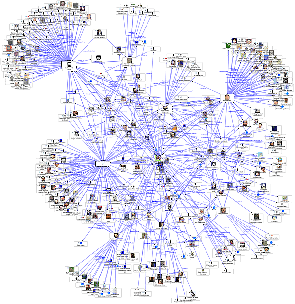March 25, 2009
Young Mandolinist, Long Presumed Human, Actually Digital Simulacrum

Numerous digitally-fabricated images of the supposed Tory lent credibility to her online presence and claims of physical existence.
SILICON VALLEY — Next week, artificial intelligence researchers from the Turing Institute for Computer Science will publish the results of a monumental six-year study describing the creation and subsequent testing of the world’s first fully viable, self-sustaining simulation of a human personality.
By integrating cutting-edge neural network modeling, a first-principles approach to behavioral psychology, and a linguistic repertoire specialized for written communication within online social networks, researchers developed an artificially intelligent construct with highly interactive capabilities.
“The primary protocol we used was a Target-Optimized Reactive Intelligence (T.O.R.I.), so we named our artificial personality Tory,” said Dr. S. Viswanathan, the assistant director of the research group.
“That’s a homonym,” he added.
Researchers programmed “Tory” to represent a friendly, well-adjusted teenage female with excellent mandolin playing skills and a deep but believable enthusiasm for acoustic music. According to her programming, Tori claimed to reside in a remote Appalachian region that few were likely to ever visit.
“The reduced complexity of online conversation made comprehension and outcome selection much more manageable, but even so we needed an entire building full of supercomputers running at all times,” said project spokesman Dr. Nicholas Rivington.
“We optimized her intelligence to include knowledge and opinions about bluegrass and folk music, but we didn’t have the computing power to make her freely conversant on other subjects,” said Dr. S. Viswanathan, the assistant director of the research group.
“Luckily, online acoustic music enthusiasts converse about non-bluegrass topics less than 0.1% of the time, so that didn’t affect our data in a statistically significant fashion,” said Dr. Viswanathan.
The Tory construct was released into the online community, where for 24-hours a day, every single day for over four years, it interacted with human bluegrass musicians and enthusiasts via social networks such as MySpace, Facebook, Friendster, and AOL Instant Messenger.
Tory’s online interactions, which were recorded and studied by researchers, were typically conducted through a profile page supplemented with massive numbers of very believable digitally generated images supposedly depicting Tori in various musical situations.
“There were a few glitches here and there, mostly involving duplication of various queries to the online community, but nobody seemed to notice that anything was amiss. Overall, our construct was a tremendous success for the whole AI field, and most of the bluegrass community is still under the impression that T.O.R.I. is an actual person,” said Dr. Rivington.







Comments
Got something to say?
You must be logged in to post a comment.